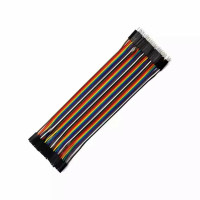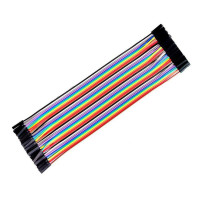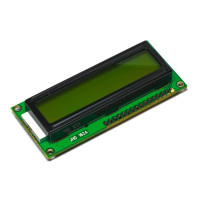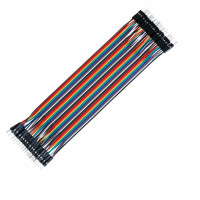Description:
The Raspberry Pi
Pico is a microcontroller board based on the RP2040, a
custom-designed microcontroller. This board is designed for ultra-low power
operation and is ideal for a wide range of embedded and DIY projects.
The heart of
the Raspberry Pi Pico is the RP2040 microcontroller,
featuring a dual-core ARM Cortex-M0+ processor that operates at a
clock speed of up to 133 MHz. The board also includes 264KB of
SRAM and 2MB of onboard QSPI flash memory, providing sufficient space
to store code and data.
While the Pico does not come
with built-in Wi-Fi, Ethernet, or Bluetooth, it can be easily connected to
external modules using SPI, UART, or I2C interfaces,
providing flexibility for various connectivity needs.
One of the standout features
of the Pico is its Programmable I/O (PIO) system, which allows
for advanced custom I/O configurations that can be useful in specialized
applications. The board is designed to be simple to use, with a micro USB
port for power and data transfer, and it can also be configured as
a mouse, keyboard, or other USB devices. Additionally,
the Pico supports drag-and-drop programming, allowing you to
upload code easily by connecting it to a computer.
Specifications:
- Model: Raspberry Pi Pico
- Microcontroller: RP2040
- Cores: Dual-core ARM Cortex-M0+ processor
- Clock Speed: Up to 133 MHz
- RAM: 264 KB SRAM
- Flash Storage: 2 MB on-board QSPI Flash
Connectivity:
- USB: USB 1.1 (for power and data transfer; micro
USB connector)
- GPIO Pins: 26 multi-function GPIO pins,
including:
- 3 analog input pins (ADC)
- 2 I2C interfaces
- 2 SPI interfaces
- 2 UART interfaces
- PWM support on all GPIO pins
Power:
- Power Supply: 1.8V to 5.5V via micro USB or GPIO
pins
- Power Consumption: Low power consumption suitable
for battery-powered projects
Features:
- Development Environment: Compatible with various
programming languages including MicroPython, C, and C++.
- Debugging: Supports SWD (Serial Wire
Debug) for debugging.
- Programmable: Can be programmed using an IDE
like Thonny (for MicroPython) or through C/C++ toolchains.
Applications:
The Raspberry Pi
Pico is designed for a wide variety of applications, particularly in
embedded systems and low-power projects. Some of its key applications include:
1. IoT
(Internet of Things) Projects:
While the Pico doesn't have built-in Wi-Fi or Bluetooth, it can easily connect
to external modules like Wi-Fi or Bluetooth via SPI, UART,
or I2C interfaces, making it perfect for IoT applications.
2. Sensor-based
Systems:
With 26 GPIO pins, including analog inputs, the Pico can be used to
build systems that interact with sensors (such as temperature, pressure, or
motion sensors) and process the data.
3. Robotics:
The Raspberry Pi Pico can be used in robotics applications for controlling
motors, sensors, and actuators. Its low power consumption and high GPIO
flexibility make it ideal for embedded robotics.
4. Wearable
Devices:
Due to its compact size and low power consumption, the Pico is a good choice
for wearable devices such as fitness trackers or other health-related devices.
5. Home
Automation:
You can use the Pico in smart home automation systems, controlling lights,
fans, or other devices, especially when combined with additional sensors and
connectivity modules.
6. Educational
Projects:
The Raspberry Pi Pico is an excellent educational tool for learning programming
and electronics. It is a popular choice in schools and universities for
teaching concepts of microcontrollers, embedded programming, and digital
electronics.
7. Custom
USB Devices:
With its USB support, the Pico can be used to create custom USB devices,
such as a USB keyboard, mouse, or even game controllers.
8. Wearables
& Embedded Systems:
Due to its small form factor and ability to be powered by batteries, the
Raspberry Pi Pico is suitable for embedded systems in devices like medical
equipment, remote monitoring systems, or wearable electronics.










